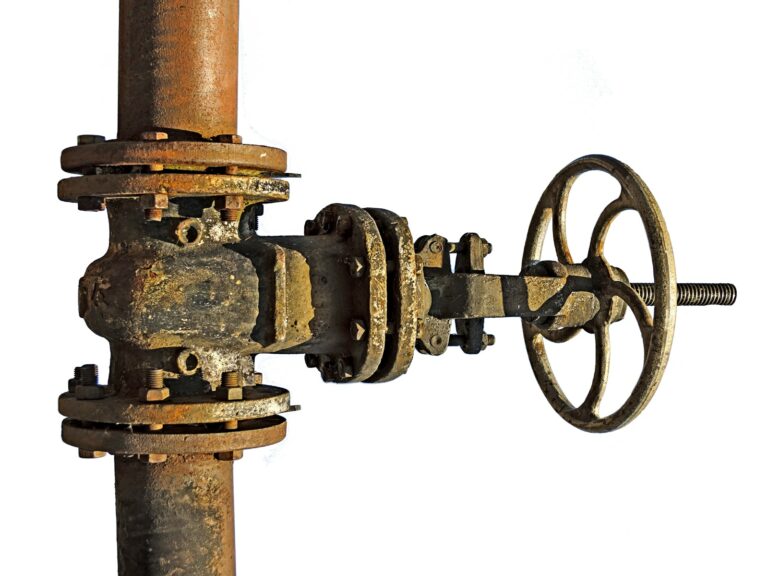Have you ever wondered how the water PSI and the weight of water are calculated? If you are buying a house, or own your own home, this information is of importance to you. Did you know that water PSI affects your quality of life? It also affects how your overall plumbing functions on your property and in your home.
The PSI of the water inside your piping system is of the same importance as the volume of water your piping system supplies to you. These two factors, PSI and volume, sort of work hand in hand.
Most home buyers and homeowners are concerned about the water pressure in their homes. There’s a good reason for that! In the rare cases when your home has too much water pressure in the pipes, there could be unneeded stress on the components of your plumbing system.
Excessive water pressure (water PSI) can also damage or cause unnecessary wear on fixtures plumbing and appliances as well. This can potentially happen if the water is pressurized via a pump and the pump malfunctions. As a point of reference, the typical water pressure in NYC is about 45 to 50 PSI (pounds per square inch).
Poor or low water PSI is a more common issue
If you have too little water pressure (the more common issue), you’ll find that taking showers and using other needed water sources at the same time could be a challenge. This can result in sudden drops in water pressure, or sudden temperature changes in the water. Not to mention, it can cause hard water sediment to settle, which creates calcium and lime build-up.
It is important to maintain adequate water pressure (water PSI) inside of your home. There are multiple plumbing fixtures that a typical house uses daily. If your water pressure is poor, it can have a serious effect on each water source’s functionality. An example would be a drop in the pressure of water temperature when two plumbing fixtures are used at the same time. This is not normal, or how plumbing systems are designed to function.
“Hey, who flushed the toilet” – If you’re one of those folks taking a shower and shouting this out, you have a water pressure problem. It is most definitely not a fun experience when you’re in the shower and the water suddenly heats up, or the pressure drops.
Too much water pressure is highly dangerous and can cause damage to:
- Pipes
- Seals
- Joints
- Fixtures
- Plumbing Appliances
Even if there is not an immediate leak, high water PSI can cause significant stress on any weak areas of your pipes. This can be a very expensive problem to fix. It is a smart idea to check your home’s water pressure regularly. If the water PSI exceeds 85 you’ll need to install an approved water pressure-reducing valve.
You may ask yourself “How can the psi inside of my water supply piping ever exceed 85 psi”? An example would be if your building is on very low ground, and your supply source is elevated (which it almost always is). If the elevation difference is around 200′ or more your PSI would exceed 85. Knowing the above information can help you be proactive, instead of reactive when it comes to avoiding plumbing nightmares.
What homeowner doesn’t want to avoid water damage, broken pipes, and other plumbing disasters? Knowing all you can about your water service line is vital to keep everything flowing and working properly.
Another common problem is water hammer
Water hammer is not related to water pressure. If is the effect of water being closed suddenly at an outlet point (such as a sink). The water that was rushing through the pipes would slam into elbows and offsets and could blow pipes apart. This is a good reason why water should be opened and closed gently. Bear this in mind especially if you have valves that open or close with just 1/4 of a turn.
How Much Does Water Weigh?
Why would a homeowner need to be concerned about the weight of water? Well, if there is too much spacing between your horizontal pipes and your pipe supports, it can damage the piping due to vibration and the pipes deflecting. It therefore can also affect the durability and effectiveness of the system.
Pipe supports should be installed at intervals of every 8′ to 12′ or so. The distance between pipe supports is cited in the local plumbing code. As a rule of thumb, and counter-intuitive, is that the larger the pipe, the longer the distance between pipe supports (hangers). This is because larger pipes are less prone to deflect or sag.
The weight of water has a compounding effect. If a water system is long, large, or high, then more overall pressure is created by the water’s weight. The actual pressure is always basically uniform, as water is essentially not compressible. A larger piping system does add the benefit of an added volume of water to serve the plumbing fixtures
Tip: To calculate the weight of the water inside a pipe, you have to multiply the density of the water by the volume in the internal pipe cross-section.

Water PSI and How to Calculate it
Water PSI is a measurement system. PSI stands for “pounds per square inch”. It represents the force or pressure of water when it enters your home from the water main. It is important to have between 30 and 50 water PSI. 30 is generally considered too low and 50 is considered more than adequate for the most part. Ideally, you want your ideal home water pressure (PSI) to be between 45 and 50.
Water PSI and Plumbing Fixtures
How much water PSI do different plumbing fixtures require?
One of the highest plumbing fixture requirements of pressure is approximately 20 pounds per square inch (PSI). That would be for a temperature-controlled shower. But usually, other plumbing fixtures like dishwashers, faucets, sinks, and bathtubs (or even your outside hose) only require a pressure of 8 PSI.
Toilets are tricky and can vary in the range of required water PSI. For instance, a flushometer-style toilet requires 20 water PSI to operate properly. On the other hand, a tank toilet only requires around 3PSI of water. That is why buildings with flushometer toilets require larger water service lines and piping inside the building.
Also, note that pipes give a natural resistance to the flow of water. Therefore the longer the run of the pipe, the larger the pipe may need to be. Friction and turbulence affect the pressure inside of the piping. If you have issues with high pressure, it can cause a lot of damage to your fixtures.
The red flags & warning signs help you diagnose a problem before it happens
- If you hear what sounds like banging in your pipes when you turn on or off a faucet or flush your toilet, this can cause serious problems and damage to your plumbing.
- If you see leaks in your fixtures and appliances, then it may be that the high pressure has probably moved your seals and washers out of their proper place.
- When a plumbing appliance or fixture fails, it likely means that high pressure may have caused damage to seals and pumps.
To avoid having costly damage to your pipes, joints, seals, washers, as well as your plumbing fixtures and appliances, and if you experience any of the above, test your homes water pressure. This only takes a few minutes, and the gauge is fairly inexpensive. A test of your piping systems PSI is best left to a professional, but it can certainly be a DIY task. If you have burst lines or ruptured hoses (this also includes any lines going to the appliances such as dishwashers and ice makers), serious damage can occur.
A Conclusion about Common Plumbing Problems and Water PSI
Balkan Sewer And Water Main Service provides sewer, drain, and water main services. We can assist you with all of your plumbing needs. Trust us to properly calculate the water volume and PSI requirements. Our expertise can bring you peace of mind.
Preventing plumbing problems is a lot less expensive than having to do damage control after the fact. Of course, if you are already experiencing some noises in your pipes or other red flags that indicate you may have a high water pressure issue, call Balkan immediately. We can find the problem and fix it to reduce extensive injury from occurring. Contact us and learn more!






